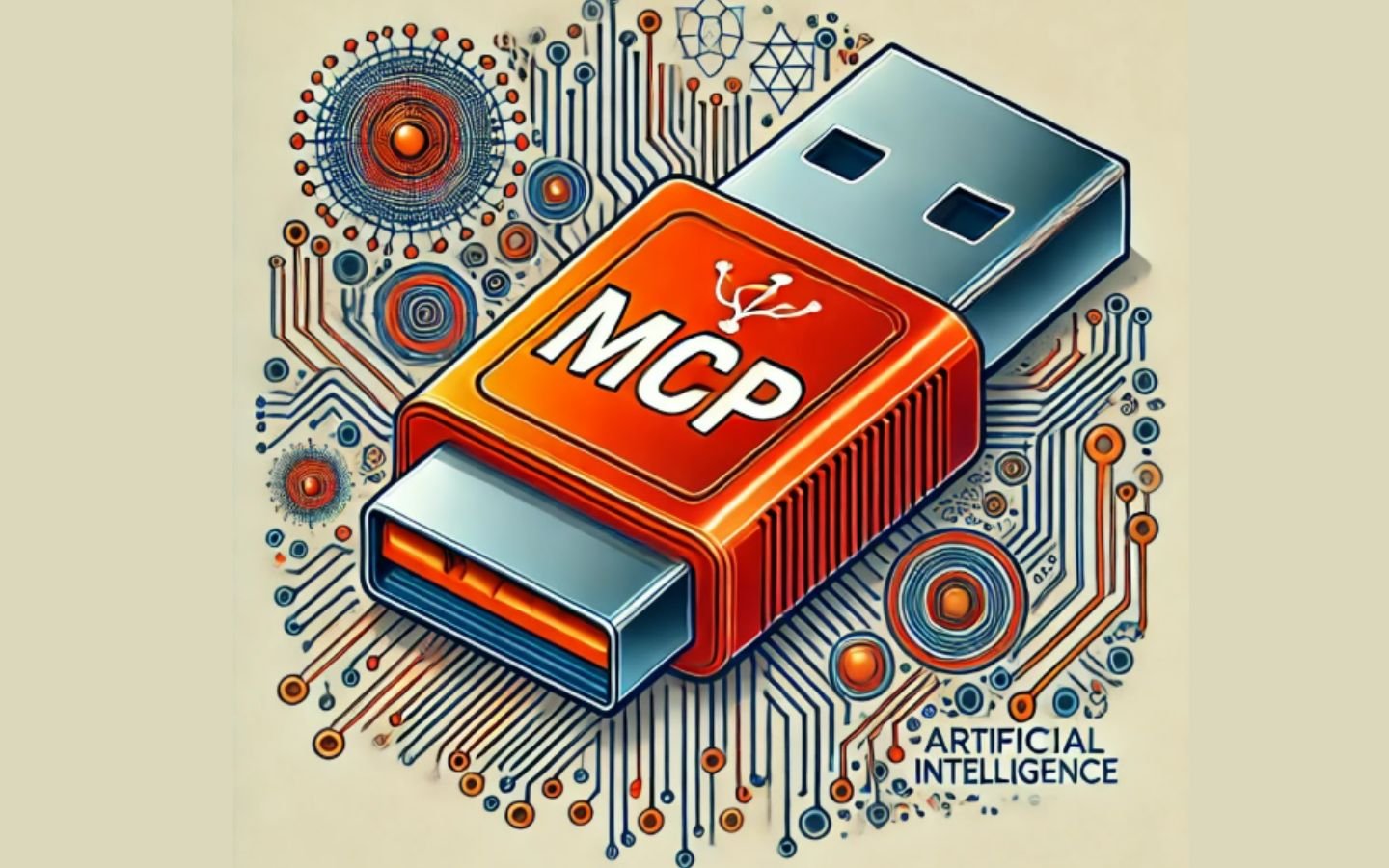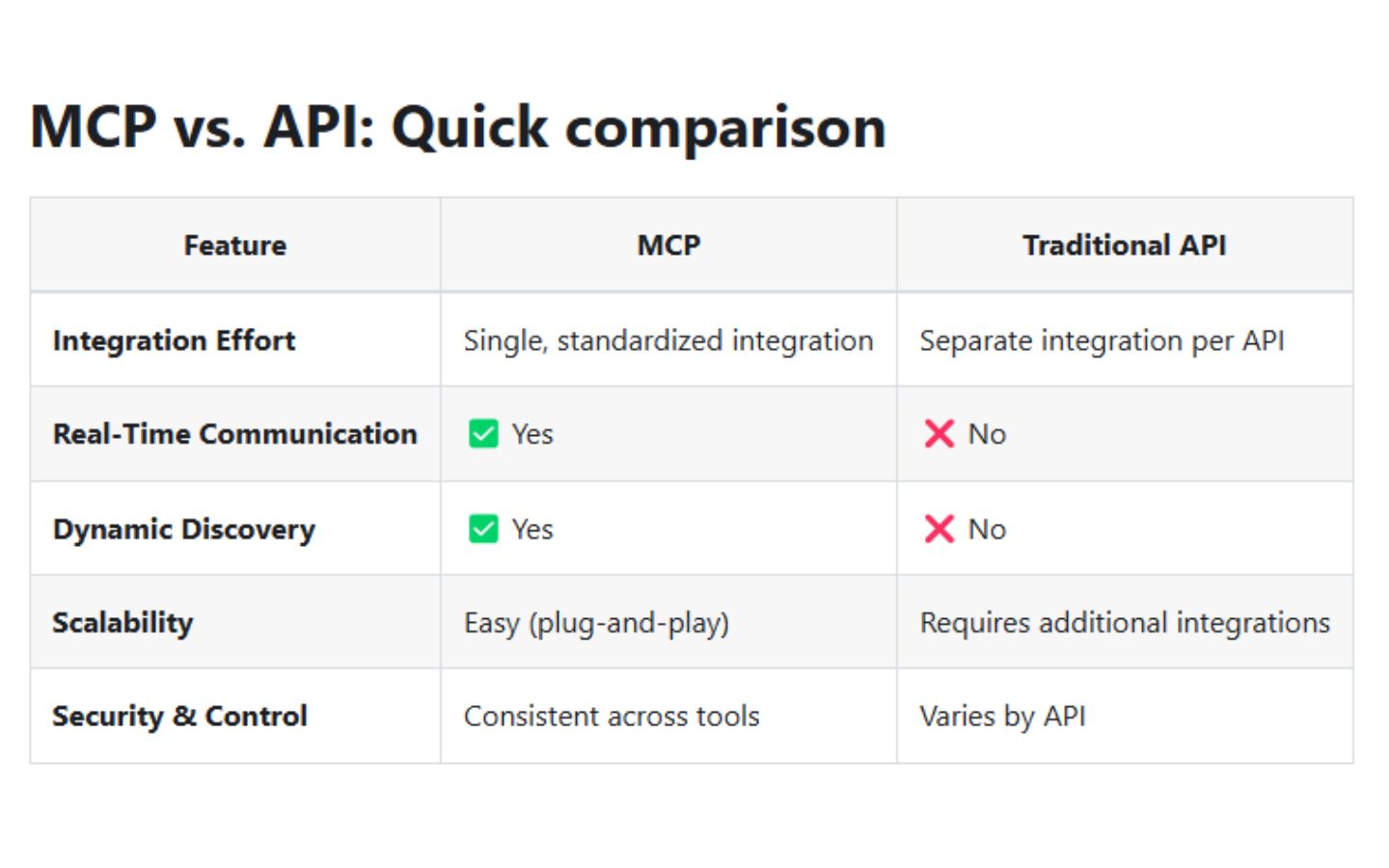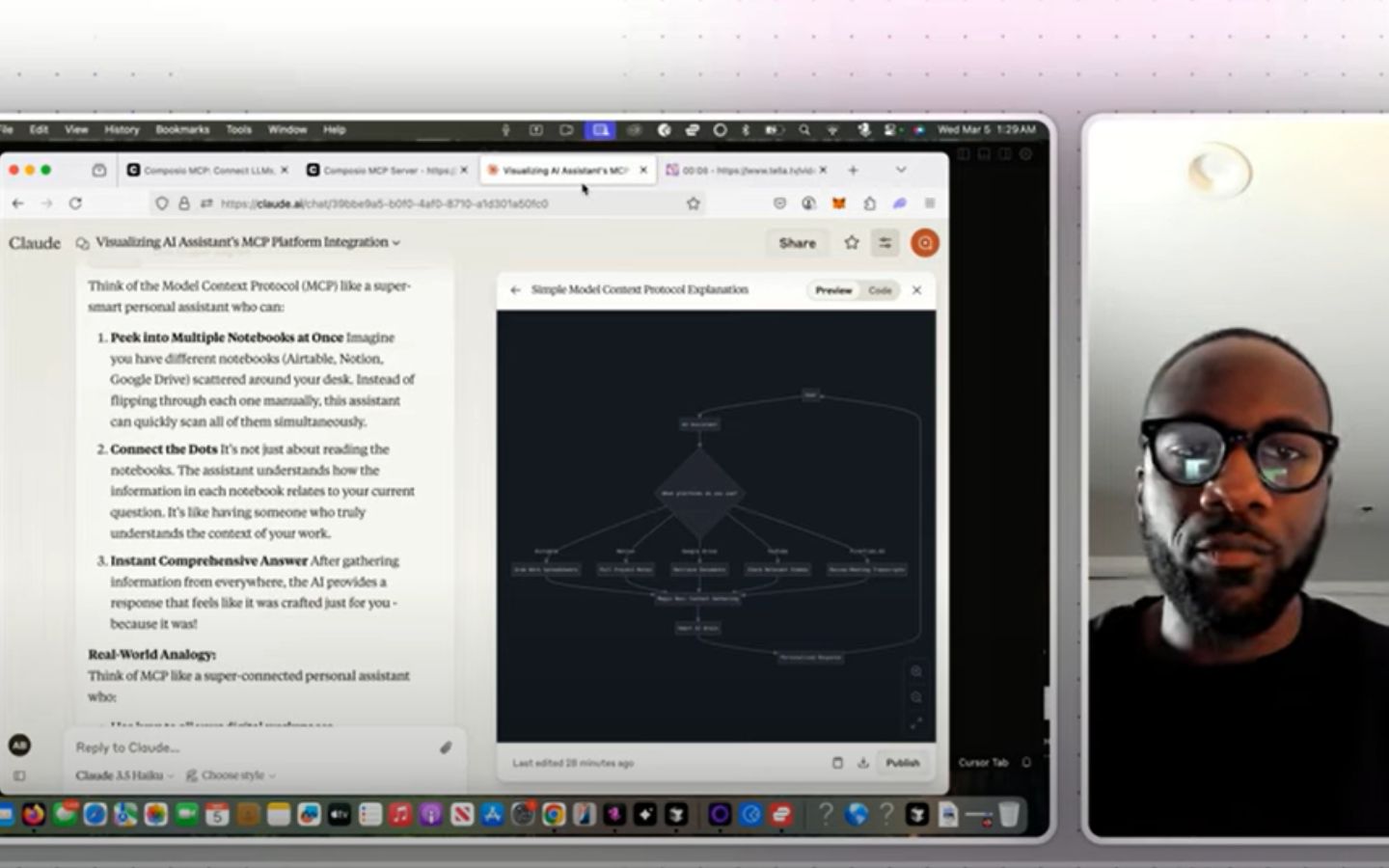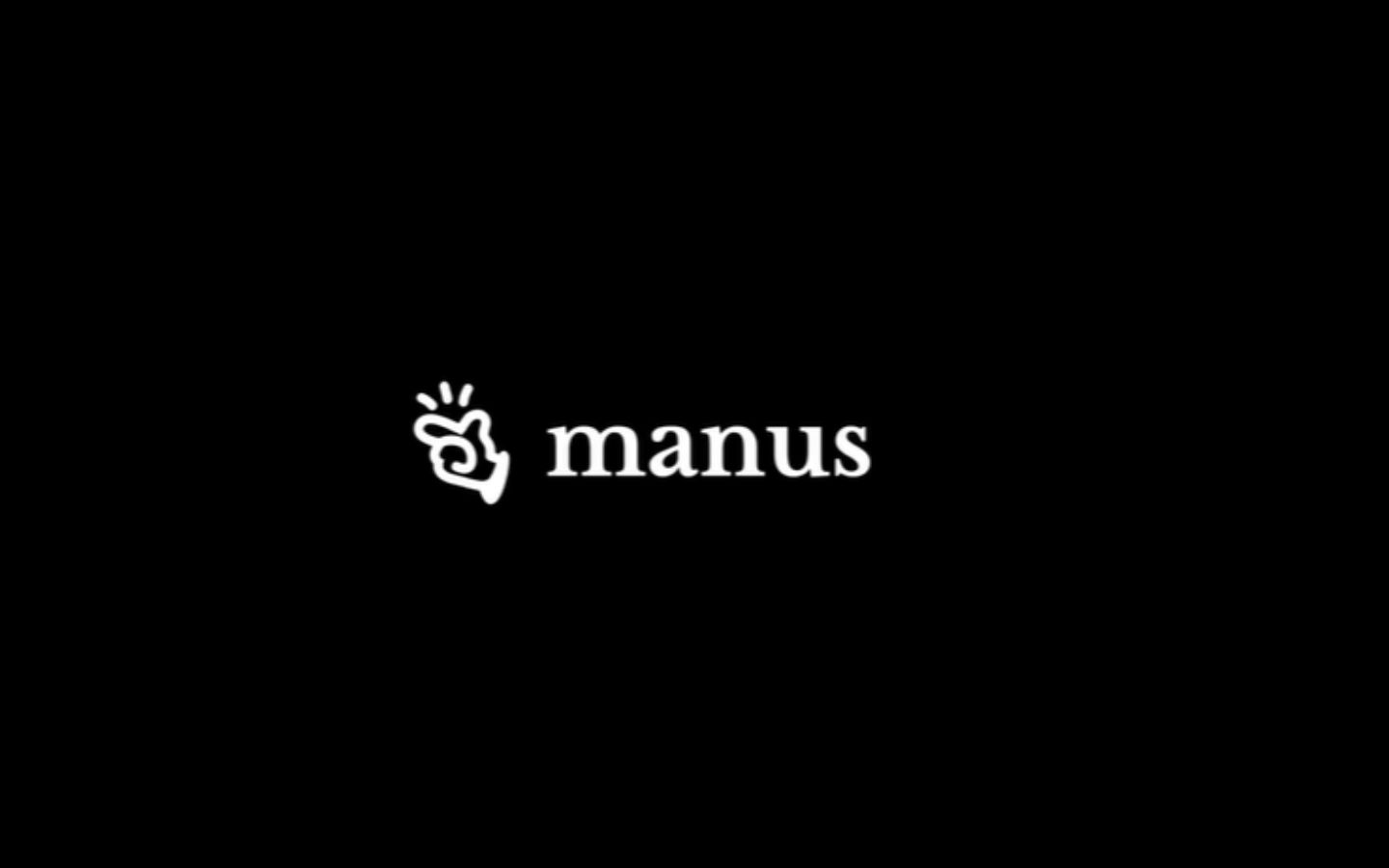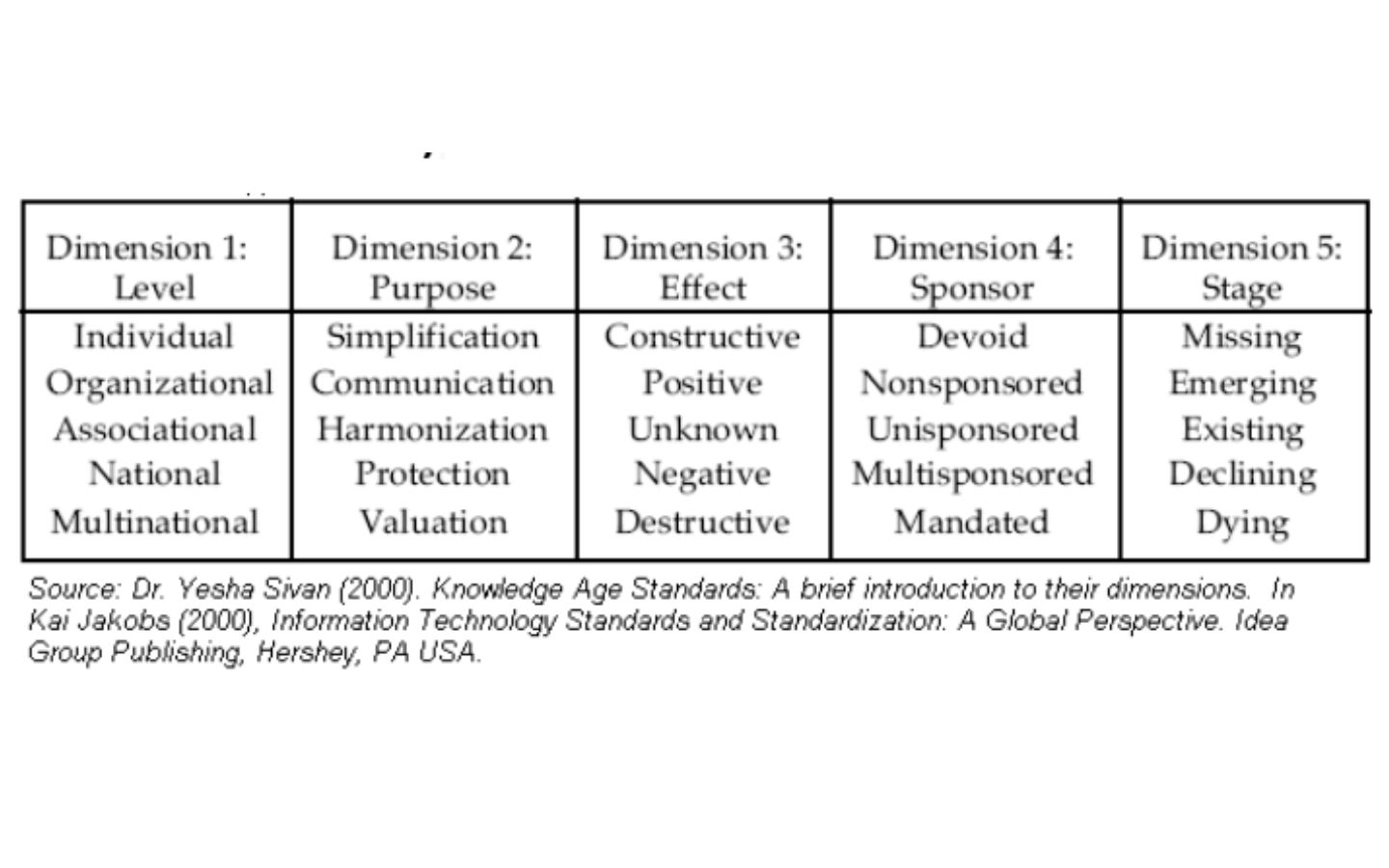Greetings AI Thinkers,
This week’s Leadership CONNECT:
- Spark of the week: Discover MCP – The USB of AI Agents (Source: Yesha on Human Thinking)
- Technical Review: How MCP Simplifies AI Integrations Compared to APIs (Source: Norah Sakal)
- Technical Review: Build Any AI Agent Workflow With MCP With Composio(Source: Akinyemi Bajulaiye, YouTube, 8m)
- Hot: China Manus Overview – General AI Agent (Source: YouTube, 4m)
- Research: Five Dimensions of Standards (Source: Yesha Sivan 2000’s Paper)
Happy Thinking,
Dr. Yesha Sivan and the MindLi Team
P.S. Comments, ideas, feedback? Send me an e-mail.
1. Spark of the Week: Discover MCP — The USB of AI Agents (Source: Yesha on Human Thinking)
Background
Remember the days when various computer cables were cluttering your workspace? Different connectors, shapes, tangled wires in your bag, and the constant struggle to find the right cable for each device.
Remember proprietary chargers creating clutter under your desk, or the inconvenience of needing various adapters for video presentations?
Enter the USB-C standard, combining power, video, and peripheral connectivity into a single versatile cable. Even Apple, influenced by welcomed EU regulations, now embraces this standard. USB-C brings exceptional value to users, manufacturers, and the environment, freeing everyone to concentrate on meaningful innovation.
A similar revolutionary concept is now emerging for AI Agents.
What is MCP (Model Context Protocol)?
MCP is an open standard developed by Anthropic that enables AI assistants to seamlessly connect to various data sources, including content repositories, business tools, and development environments. This unified protocol empowers AI models to access current, relevant information, significantly improving their performance and contextual awareness. By serving as a universal connector, MCP simplifies the integration process, allowing AI systems to communicate with multiple tools and datasets through a single protocol, reducing the need for customized integrations. This approach promotes a more sustainable and scalable architecture for AI applications.
Key Features of MCP
- Unified Connectivity: A single protocol connects AI models effortlessly with diverse tools like CRM platforms, content management systems, and productivity apps.
- Instant Integration: Easy setup without extensive technical expertise, accelerating the deployment of AI solutions.
- Scalable and Adaptable: Effortlessly handles expanding data sources and supports growing teams, ensuring future-proof AI solutions.
- Robust Security: Advanced encryption and authentication protect sensitive information and maintain compliance.
- Resource Efficiency: Consolidates multiple connections into a single protocol, significantly reducing resource usage and technological waste.
Practical Examples of MCP Usage
- Customer Support AI: Enables AI chatbots to instantly access knowledge bases, ticketing systems, and CRM platforms, resulting in informed and efficient customer interactions.
- Project Management Automation: Allows AI agents to integrate seamlessly with task management tools, calendars, and communication apps, enhancing project tracking and productivity.
- Content Generation Assistants: Facilitates direct connections between AI content tools and content libraries, editorial calendars, and market data, enabling rapid creation of relevant and targeted content.
For Leaders
MCP is positioned to transform our interactions with AI, delivering accelerated development, improved interoperability, and significantly simplified processes.
Leaders should approach MCP similarly to how they approach USB, HTML, or HDMI standards—trusting their technical teams to manage the details. Awareness of MCP’s growing maturity is valuable, but deep technical knowledge isn’t necessary.
However, standards environments are dynamic and competitive, so it’s prudent to monitor the evolving landscape, keeping an eye on MCP and potential competing standards.
2. Technical Review: How MCP Simplifies AI Integrations Compared to APIs (Source: Norah Sakal)
Summarize (MindLi Spark AI on 13-Mar-2025)
- Model Context Protocol (MCP) is an open standard designed to efficiently connect AI models to tools and data sources.
- MCP simplifies AI integrations by providing a unified method for connecting AI systems, similar to a USB-C port for devices.
- Unlike traditional APIs, which require separate integrations for each service, MCP allows for a single standardized integration.
- MCP supports dynamic discovery and real-time two-way communication, enabling AI models to interact with tools and data seamlessly.
- The protocol was initiated by Anthropic and is now an open standard with contributions from various companies and developers.
- Key benefits of MCP include simplified development, flexibility in switching tools, real-time responsiveness, enhanced security, and scalability.
- Traditional APIs may still be preferable for use cases requiring precise control and predictable interactions.
- Implementing MCP involves defining capabilities, adhering to protocol specifications, choosing transport methods, and establishing secure connections.
3. Technical Review: Build Any AI Agent Workflow With MCP With Composio (Source: Akinyemi Bajulaiye, YouTube, 8m)
This video provided an overview of the Model Context Protocol Framework, why it’s useful, and how the value of it will accrue over time. Along with this, I go through a practical example of how you can start applying it in a way that enhances the efficacy of your business processes.
Link to composio MCPs: https://composio.dev/mcp/
Timestamps:
0:00 Introduction to Model Context Protocol (MCP)
0:36 Why MCP is important for AI workflows
2:19 How MCP connects AI assistants to different software
4:33 Setting up a Google Calendar MCP server in Cursor
7:30 Using MCP to automate scheduling and integrations
Watch the video
4. Hot: Overview of China’s Manus — General AI Agent (Source: YouTube, 4m)
Company Overview: Manus is an autonomous artificial intelligence agent developed by the Chinese startup Monica, designed to independently execute complex real-world tasks without direct human intervention.
Key Features: Manus operates autonomously, performing tasks such as analyzing financial transactions, screening job applicants, and searching for rental properties, all without explicit instructions.
Recent Developments: On March 11, 2025, Manus AI announced a strategic partnership with Alibaba’s Qwen AI models team to integrate its functionalities onto China’s domestic models and computing platforms.
Market Impact: The launch of Manus has drawn comparisons to DeepSeek, highlighting China’s advancements in AI technology and its ability to compete globally in this field.
5. Research: Five Dimensions of Standards (Source: Yesha Sivan 2000’s Paper)
Note: In 2000, in one of my first academic papers, I looked deeply at the power of the standard. Here is an abstract and a link to the complete PDF chapter.
The diverse uses of “standards” define the goal of this work, namely, to develop a general framework of standards and to reflect on the process and outcome of the development of the framework. My intention is to devise a theoretical framework that may be translated into practice at some future point.
The principle outcome is a framework of standards that includes five dimensions: Level, Purpose, Effect, Sponsor, and Stage, each of which contains five categories that together define the dimension. The dimensions show:
- how standards can be produced and used by entities from different Levels
(individual, organizational, associational, national, and multinational); - how they can have one or more Purposes (simplification, communication,
harmonization, protection, and valuation); - how they can cause diverse Effects (constructive, positive, unknown, negative,
and destructive); - how they can be developed by different Sponsors (devoid, nonsponsored,
unisponsored, multisponsored, and mandated); and - how they can be in different Stages (missing, emerging, existing, declining,
and dying).
In presenting the framework, the chapter also touches on the roles of standards in the industrial age, their potential roles in the knowledge age, and the current turmoil in the standards community. It includes reflections on designing and judging the framework.
About MindLi CONNECT Newsletter
Aimed at AI Thinkers, the MindLi CONNECT newsletter is your source for news and inspiration.
Enjoy!
MindLi – The Links You Need
General:
- Website — MindLi.com — All the details you want and need.
- LinkedIn — MindLi 🌍 GLOBAL Group — Once a week or so, main formal updates. ⬅️ Start here for regular updates.
- WhatsApp — MindLi Updates — If you need it, the same global updates will be sent to your phone for easier consumption. This is similar to the above Global group — once a week or so.
- Contact us – We’re here to answer questions, receive comments, ideas, and feedback.
Focused:
- LinkedIn — MindLi 🧠 AI Group — More technical updates on AI, AGI, and Human thinking. ⬅️ Your AI ANTI-FOMO remedy — Almost Daily.
- LinkedIn — MindLi 👩⚕️HEALTHCARE Group — Specifically for our favorite domain — healthcare, digital healthcare, and AI for healthcare — Weekly.
- LinkedIn — MindLi 🛠️ FOW – Future of Work Group — thinking about current and future work? This is the place for you — Weekly.
- LinkedIn — MindLi 🕶️ JVWR – Virtual Worlds Group — About virtual worlds, 3D3C, JVWR (Journal of Virtual World Research), and the good old Metaverse — Monthly.
- LinkedIn — MindLi Ⓜ️ Tribe Group — Our internal group for beta testers of MindLi, by invite — when we have updates, call for advice, need for testing, etc (also ask about our special WhatsApp group).


